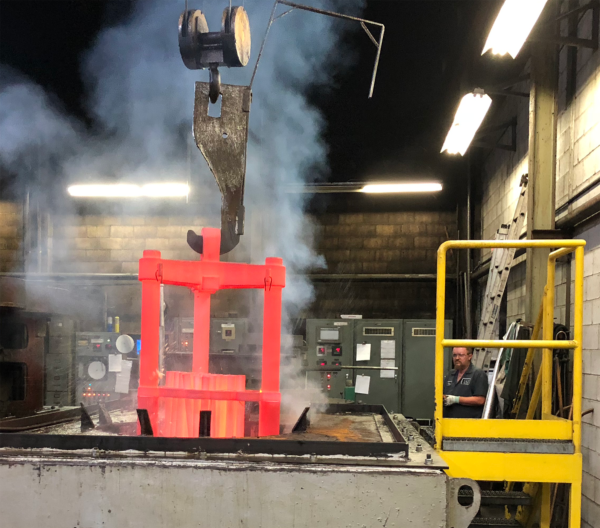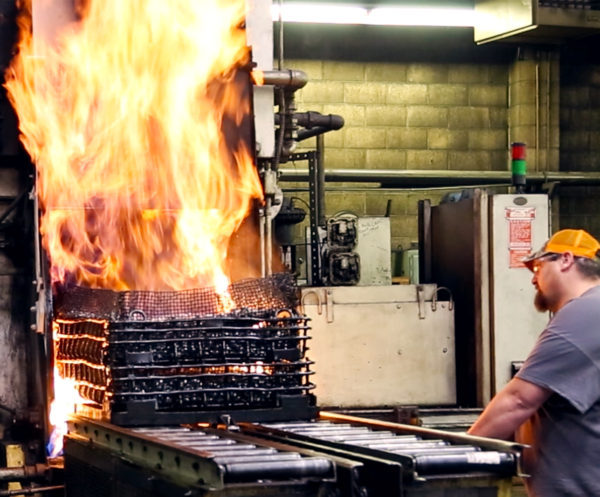Quenching and Tempering
Quenching and tempering is a heat treatment process used to obtain high strength and toughness in various grades of metal.
 The first step to quenching and tempering is austentizing. Austentizing is the process of heating a metal above a critical temperature (typically at least 1350 oF) for sufficient time to transform the microstructure to austenite (a nonmagnetic iron phase). This temperature is held for a predetermined period of time (typically 1 hour per inch of thickness). Once this time has been reached the material will be immediately quenched.
The first step to quenching and tempering is austentizing. Austentizing is the process of heating a metal above a critical temperature (typically at least 1350 oF) for sufficient time to transform the microstructure to austenite (a nonmagnetic iron phase). This temperature is held for a predetermined period of time (typically 1 hour per inch of thickness). Once this time has been reached the material will be immediately quenched.
Quenching is a process of rapidly cooling metal from the austenitizing temperature. In ferrous alloys (such as alloy steel, carbon steel and some stainless steels), this will often produce a harder metal by transforming the austenite to martensite, while non-ferrous alloys (brass, aluminum, some stainless steels, and superalloys etc.) will usually become softer than normal.

Depending on the alloy and various other factors, cooling may be done with forced air or other gases, (such as nitrogen) or liquids, such as oil, water, and a polymer dissolved in water, or a brine. Each of the different type of cooling media generates different properties and will be selected based on the desired results and type of material being quenched.
The formation of martensite in steel alloys makes a very hard but brittle material which is too brittle to be useful for most applications. A method for alleviating this problem is called tempering, which consists of heating to a lower temperature, (often from 400 to 1100 ËšF), to impart some toughness and reduce the hardness. The higher the tempering temperature the lower the strength and hardness while imparting more toughness. Tempering may also be performed on normalized steels.
Typical applications – Carbon and Alloy steel, some stainless steel, some tool steels
